- Home
- Thomas Keneally
A Commonwealth of Thieves Page 33
A Commonwealth of Thieves Read online
Page 33
Because of settlement at Parramatta, and the area known as Toongabbie to the north-west of Parramatta, many of the clans of the Burramattagal were pushed west. Here the warrior Pemulwuy of the Bediagal from the north shore of Botany Bay began to cooperate with the Bidjigal. If Bennelong had come to some accommodation with the accumulating waves of Europeans or ghosts, Pemulwuy had not. Near Prospect Hill west of Parramatta in May, seven native men and two women stole clothing and corn, and a convict worker on the farm fired at a man preparing to throw his spear. The party fled, abandoning nets containing corn, blankets, and spears. The natives took a fast revenge. A convict employed on well-digging on a farm near Prospect Hill walked to Parramatta to collect his clothing ration. On the way back he was attacked, his head was cut in several places, and his teeth were smashed out. His dead body gaped with wounds from spears.
Here was the contrast. Bennelong was victualled from the store—he took the rations as recompense for damage done his people. Pemulwuy, who was involved in the murder of the convict, would not deign to receive that sort of requital. He would not take Phillip's appeasing flour, or any other gift. Gift-giving was continuous amongst natives, and the basis of prestige and human cohesion amongst groups and relatives. Those who did not participate were named damunalung, a word which was translated into English by Lieutenant Dawes as “churl.” But Pemulwuy would not enter into gift-swapping with the newcomers.
It would have confirmed his worst suspicions had he known Arthur Phillip still had an ambition to send an Aboriginal skull to the great Sir Joseph Banks. The whites had raked through burial mounds to find remaining bones which might be of scientific interest, and at one, Captain John Hunter discovered a jawbone. But Phillip managed to acquire a skull at last—we do not know whose it was—and sent it to Banks, who in turn sent it on to Professor Johann Friedrich Blumenbach of the University of Göttingen. The male skull had its front tooth missing, as Banks had warned Blumenbach would be the case, “according to the custom of these savages.” Blumenbach was a pioneer in the branch of science known as physical anthropology. Caucasians, according to Blumenbach, who coined that term from an Aryan skull he had retrieved from the Caucasus Mountains, were the founding form of the human group, while other races had degenerated from this primary type because of climatic variations. The skull he received from Banks would go to support his theory, though Blumenbach himself, who would live until 1840, was repelled by the political use to which his dissertations were put. The perversion of his ideas would reach its apogee in Nazi ideology, when Blumenbach's collection at Göttingen “became a core of racist, pan-Germanic theory, which was officially sanctioned by the National Socialist Party when it came into power.”
twenty-eight
THE AGE OF CONVICT FLEETS had ended, but transportation by regularly dispatched individual ships had begun, the government retreating shamefaced from its dalliance with Camden, Calvert and King. It was as an individual transport that a large ship named the Pitt, of 775 tons, had sailed on 17 July 1791 carrying nearly 400 male and female prisoners. The Pitt had originally embarked nearly 450 prisoners, but a complaint about overcrowding was made to the Commissioners of the Navy, and as a result of an inspection it was decided she could not accommodate more than 410 on the two-level benches which made up her sleeping quarters. The inspecting officers remarked in their report that “if a sickness should happen, a sick [person] and a person in health must touch each other.”
On the gun deck, below the quarterdeck, three separate coops in front of the main cabin were set apart for the women's quarters. The fifty-eight women convicts would therefore have better ventilated spaces, though they were equally as cramped as the men—in fact, an extra shack needed to be built on the gun deck to take their overflow.
Smallpox struck the prison deck soon after the Pitt's departure from Yarmouth Roads, and even before the Cape Verde Islands there were fifteen deaths amongst the convicts. In the doldrums off Africa, the prisoners developed ulcers on their bodies from lack of vitamin B and showed symptoms of scurvy. A fever struck, killing twenty-seven people—soldiers, sailors, and their families—in a fortnight. The crew was left so short-handed that some of the convicts with maritime experience had to be recruited up from the prison deck to help sail the vessel.
Aboard this vessel travelled Major Francis Grose, on his way to assume command of the New South Wales Corps. He would be the new lieutenant-governor, and came from a more privileged background than Phillip. His father was a renowned antiquary, and his grandfather a jeweller who had counted George II among his clients. He had a more genial nature than Ross—if anything he would become over time too accommodating to the desires of the officers of his corps for land and wealth. Grose, like the majority of officers, had campaigned during the American Revolution, fighting in the summer of 1778 at Monmouth Courthouse in New Jersey, a battle site at which the heat may well have killed as many men as were shot, though he was amongst the latter. After nearly six years on half-pay, he was delighted to be appointed lieutenant-governor of New South Wales and commandant of the New South Wales Corps, which, as a professional recruiter, he had helped to raise.
Grose reported from Rio on 22 October 1791 that the sick, including soldiers' and convicts' children, were landed on an island—perhaps the island the Portuguese had appointed for the use of Phillip's First Fleet four years earlier. The serving of fresh provisions there helped restore the health of many, though five convicts tried to swim for the mainland and were believed drowned in the attempt.
When at last Pitt arrived at Port Jackson in February 1792, a further twenty male and nine female prisoners had died, and 120 of the men were landed sick. Surgeon White's hospital was again required to deal with a huge medical emergency. So though Macaulay's ship did not create quite the massacre of the Second Fleet, it was still a ship of disgrace. The ship's officers set up a store ashore to sell goods they had brought out at their own expense. “The high price at which everything was sold, the avidity with which all descriptions of people grasped at what was purchased was extraordinary, and could only be accounted for by the distance of our situation from the Mother Country, the uncertainty of receiving supplies thence, and the length of time which we had heretofore the mortification to find elapse without our receiving any.”
The Pitt brought for the commissary store mainly salt beef, enough to extend the provisions of the settlement for forty days, and the ship was subsequently employed in taking a proportion of the supplies to Norfolk Island.
Having landed and inspected his garrison, Major Grose was enthused by what he saw in Phillip's Sydney Cove and Parramatta. “I find there is neither the scarcity that was represented to me, nor the barren sands I was taught to imagine I should see; the whole place is a garden, on which fruit and vegetables of every description grow in the greatest luxuriance … within five miles of my habitation there is food in abundance for many thousand head of cattle…. Could we once be supplied with cattle, I do not believe we should have occasion to trouble Old England again. I live in as good a house as I desire; and the farm of my predecessor, which has been given to me, produces a sufficiency of everything for my family. The climate, though very hot, is not unwholesome, we have plenty of fish, and there is good shooting.” There was at last, in Grose's picture, the promise of a settled colony and a habitable place.
Even though Grose saw Sydney Cove in such positive light, it was indeed a hot season, and those male convicts of Pitt who had been passed as healthy on landing were put to work cultivating and clearing public ground beyond Parramatta. They found it hard under that hammering February sun, in New South Wales's most humid month. Many of them began to join their prison-deck mates in hospital. The offer of full and more justly distributed rations could not save some. The record of burials, chiefly of newcomers, during that late summer is sobering. On 16 February, four convicts were buried, and six the next day, and a further six on 20 February. Five were buried the next day, a further two the day after, on 23 F
ebruary a further six, on 25 February another four—and these just at Parramatta. The regular multiple burials of men continued throughout the following months. By May 1792, of 122 male convicts who came out in the Queen, only fifty were still alive.
Yet the vigour of the settlement had affirmed itself for Phillip when in late February he issued fifty-two further land grants to former convicts, chiefly in the Parramatta–Prospect Hill area—and all without reference to the interested Eora parties. He would write, however, to the third Secretary of State he would deal with, Sir Henry Dundas, a former Edinburgh lawyer and a veteran Scottish whig party boss, in not entirely positive terms: “What I feared from the kind of settlers I have been obliged to accept has happened in several instances.” The convict settlers in some cases grew tired “of a life so different to that from which they have been brought up” and abandoned their grants or sold their livestock to purchase from stores like that set up by the master of Pitt “articles from which they do not reap any real benefit.” Even so, of dozens of settlers around Parramatta, only half a dozen had actually lost or given up their land in this way, and a number of ex-convict farmers had convicts working for them and being supported by them. Nonetheless, Phillip knew that twenty-two time-expired men and nine women intended to go home on the Pitt. “Thus will the best people always be carried away, for those who cannot be received on board the ships as seamen or carpenters pay for their passage.”
In the Sydney area and along the Parramatta River, the burials of convicts continued through winter and into spring, but the man who conducted them was thinking of the children of convicts and their education as well. By the Pitt, Richard Johnson told a friend in England, came “a man convict” who for some years had been accustomed to the profession of teaching. The man was now schoolmaster at Norfolk Island, but on the mainland there were no classes at all, and Johnson thought it was a great chance gone begging not only for mainland children of convicts but for convicts themselves who could have been instructed to read.
By this time, in early 1792, Johnson's house was crowded with native children, while Mrs. Johnson was “far gone with child,” and domestic life was under pressure. One could not with entire justice depict Johnson as the dull, unimaginative evangelist who neglected the natives. He was still engaged with a struggle against Phillip's indifference to religion as anything more than a form of social regulation. The foundations of a church had been laid at Parramatta the previous spring, but before it was finished it was converted into a gaol, and then into a granary. Phillip had at one stage put aside 400 acres for church use as a glebe, but did not give Johnson any help to cultivate it. “What, sir,” Johnson asked one of his London friends, “are 400 or 4000 acres full of large green trees unless some convicts be allowed to cultivate it? ”
He was still holding services at a boathouse along the fore shores of Sydney Cove and in the open, and in any shelters indoors or out he could find in Parramatta or Toongabbie. “The last time I preached at Sydney was in the open air,” he admitted with reasonable pride but some resentment. He was troubled by migraine, and often dreaded the coming of Sunday and the glaring Sabbath sun.
On the day he wrote his plaint he had to bury another six convicts. Death in such numbers must itself have been a form of stress on a soul whose resources were limited.
JOHNSON'S DAUGHTER IN CHRIST, Mary Bryant, was at this time still being taken home to England on the lower deck of a Dutch ship. When the three Dutch vessels Captain Edwards had hired in Batavia reached Table Bay off Cape Town in March 1792, they found that the HMS Gorgon with Major Ross and other marines aboard, including Watkin Tench, was already moored in the roads. Edwards decided to send aboard her the ten remaining Bounty mutineers “and the convict deserters from Port Jackson.” Mary, her four-year-old daughter, Charlotte, and William Allen were the first to be transferred, and then Martin, Butcher/Broome, and Nathaniel Lilly. Watkin Tench took time to interview the party, barely disguising his admiration of their successful escape. “We was well known by all the marine officers which was all glad that we had not perished at sea,” James Martin wrote. “I confess that I had never looked at these people, without pity and astonishment,” declared Watkin. “They had miscarried in a heroic struggle for liberty; after having combated every hardship, and conquered every difficulty … and I could not but reflect with admiration at the strange combination of circumstances which had again brought us together, to baffle human foresight, and confound human speculation.”
The Gorgon left Table Bay for England in early April. At first there were many days of fine weather, and as Clark said, “a charming trade wind.” The island of St. Helena came into sight: “nothing but a barren rock, worse than any part of New South Wales.” None of the children aboard were well, even after spending time in a shore camp in Cape Town being nursed and fed for the continuation of their long voyage. Corporal Samuel Bacon and his wife, Jane, had already lost one child on the first evening out from Cape Town— “it was ill on shore.” A little over two weeks later, the other of the twins of Corporal Bacon died. Clark wrote: “Several more of the young children will, I am afraid, die. This hot weather is playing the devil with the children—down here it is as hot as hell—I wish to God we had got 20 degrees the other side of the line.”
Edward Divan, son of Sergeant Divan, quartermaster in Captain Campbell's company, born aboard the Charlotte on the way out, saw both his younger brothers, Dennis and Mark, committed to the sea from the broiling deck of Gorgon. Then Sergeant Andrew Gilbourn's child perished. “I am very sorry for poor little John—he was a fine child,” wrote Clark. William Mapp, the child of Private James Mapp and the late Susan Creswell, a convict, died a few days later, just as Clark was committing to his journal his hope that if “this little good breeze continues … we will be out of the southering part of the world, into that my love lives in. I hope that we shall be in the same side of the world that my Betsy is in before twelve o'clock at night.”
In early May another child, the youngest of Private John Turner and his wife, Susannah, was sent to the deep. Mary Bryant heard the weeping and keening of women from the crowded troop quarters, not much preferable to the ones she occupied, where the atmosphere must have been funereal.
With so many barely consoled women howling close by, their children worn out by the distance between Sydney and London, Mary must have known that Charlotte, who had been through more than any other child aboard, was unlikely to survive. But even though genial Captain Parker allowed Mary and Charlotte regularly on deck, Mary understood that Charlotte was under the axe of the same dietary exhaustion and fevers as the other children.
“Last night,” wrote Clark on May's first Sabbath, “the child belonging to Mary Broad, the convict woman who went away in the fishing boat from Port Jackson last year died about four o'clock, [we] committed the body to the deep, latitude 5 degrees 25 minutes North.” The ship was surrounded by sharks which had learned that a regular supply of flesh trailed from this vessel, the child of a marine having died only two days before Charlotte.
The Gorgon arrived at Portsmouth on 18 June 1792. Transport was arranged at once to take Mary and the other escapees to London, where, towards the end of the month, they appeared before Magistrate Nicholas Bond, and were identified all too willingly by that grand stickler Captain Edwards. The magistrate sent them to Newgate but “declared he never experienced so disagreeable a task as being obliged to commit them to prison, and assured them that, as far as lay in his power, he would assist them.”
As grim as the wards of Newgate were, the escapees all declared that they would sooner suffer death than return to Botany Bay, according to a contemporary broadsheet. The London Chronicle said they found the prison “a paradise, compared with the dreadful sufferings they endured on their voyage.”
James Boswell, famed companion of Dr. Samuel Johnson, generous by nature and with a taste for handsome and robust girls of the lower orders, appealed repeatedly to his friend Dundas and to the Under Secret
ary Evan Nepean for a pardon for Mary and the others. He collected 17 guineas as a subscription for Mary to purchase comforts in prison, and enquired into the nature of her family in the West Country by consulting the Reverend William Johnson Temple, his “old and most intimate friend” in Devon. The Reverend Temple reported that Mary's relatives were “eminent for sheep stealing.”
When Mary and the others appeared at the Old Bailey on 7 July 1792, the prosecutor did not seek the statutory death penalty for their return from transportation. “Government would not treat them with harshness, but at the same time, would not do a kind thing to them, as they might give encouragement to others to escape.”
Boswell decided to visit Mary in Newgate and take up the cause for her pardon. He had twenty years of practice at the Scottish bar behind him when he began the process of writing Samuel Johnson's life, and he was an ardent counsel, in the old days often defending accused against the then Crown Prosecutor of Scotland, Henry Dundas.
The final judgment of the Old Bailey court had been that the Botany Bay escapees were “to remain on their former sentences until they should be discharged by due course of law.” That was not good enough, Boswell thought, and asked Dundas for an appointment, but failed to get one. So on 16 August 1792, he wrote to Dundas again. “The only solution you can give me for this unpleasant disappointment is to favour me with two lines directed Penrhyn, Cornwall [where Boswell had gone to see the Reverend Temple], assuring me that nothing harsh shall be done to the unfortunate adventurers from New South Wales, for whom I interest myself, and whose very extra ordinary case surely will not found a precedent.” Dundas replied, promising “to duly consider” Boswell's petition.
On 2 May 1793, the Home Secretary advised the Sheriff of Middlesex that Mary Bryant had received an unconditional pardon. Released from Newgate, she remained in London, seemingly at Boswell's expense, until the following October. Amongst Boswell's papers is a record headed “Mary's Money,” which lists amounts paid for her lodgings and for a bonnet, a gown, shoes, and a prayer book. Reverend William Temple wrote to Boswell to tell him that subscribers to a fund to help settle her back in Cornwall were put off by the allegation that her family were still engaged in stealing livestock. Nevertheless, a sister of Mary's, Mrs. Puckey of Fowey, wrote to Boswell telling him that Mary would be kindly received if she were to return to her home town.

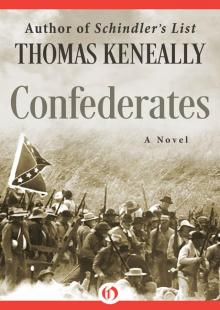 Confederates
Confederates Flying Hero Class
Flying Hero Class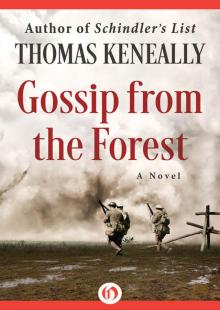 Gossip From the Forest
Gossip From the Forest Schindler's List
Schindler's List Bring Larks and Heroes
Bring Larks and Heroes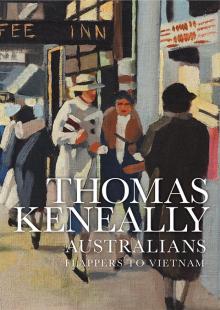 Australians: Flappers to Vietnam
Australians: Flappers to Vietnam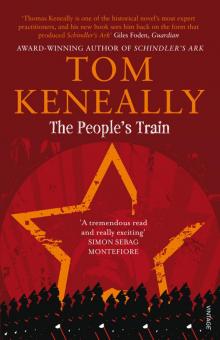 The People's Train
The People's Train Crimes of the Father
Crimes of the Father A Family Madness
A Family Madness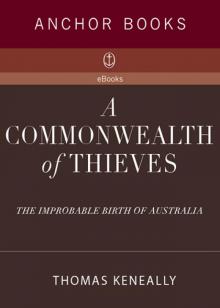 A Commonwealth of Thieves
A Commonwealth of Thieves Ned Kelly and the City of Bees
Ned Kelly and the City of Bees A River Town
A River Town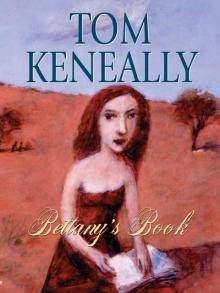 Bettany's Book
Bettany's Book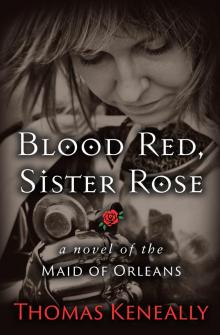 Blood Red, Sister Rose: A Novel of the Maid of Orleans
Blood Red, Sister Rose: A Novel of the Maid of Orleans Victim of the Aurora
Victim of the Aurora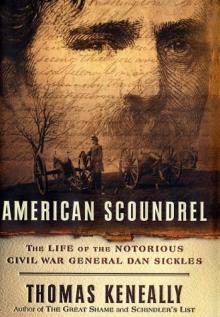 American Scoundrel American Scoundrel American Scoundrel
American Scoundrel American Scoundrel American Scoundrel Three Cheers for the Paraclete
Three Cheers for the Paraclete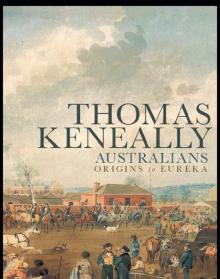 Australians: Origins to Eureka: 1
Australians: Origins to Eureka: 1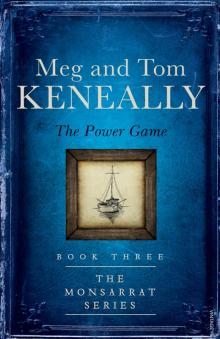 The Power Game
The Power Game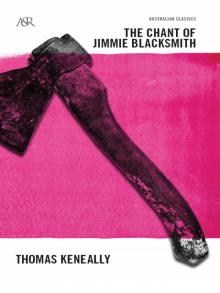 The Chant Of Jimmie Blacksmith
The Chant Of Jimmie Blacksmith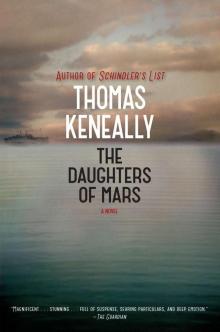 The Daughters of Mars
The Daughters of Mars Searching for Schindler
Searching for Schindler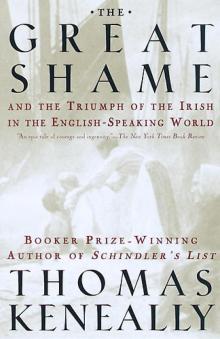 The Great Shame: And the Triumph of the Irish in the English-Speaking World
The Great Shame: And the Triumph of the Irish in the English-Speaking World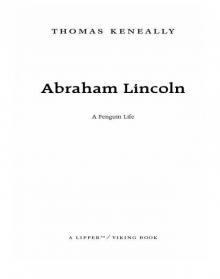 Abraham Lincoln
Abraham Lincoln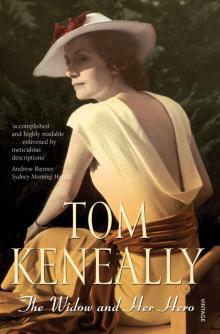 The Widow and Her Hero
The Widow and Her Hero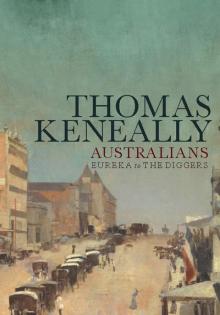 Eureka to the Diggers
Eureka to the Diggers Shame and the Captives
Shame and the Captives The Survivor
The Survivor Jacko: The Great Intruder
Jacko: The Great Intruder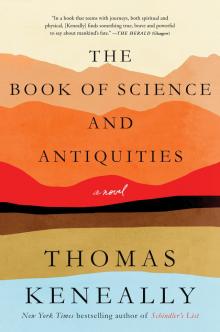 The Book of Science and Antiquities
The Book of Science and Antiquities Homebush Boy
Homebush Boy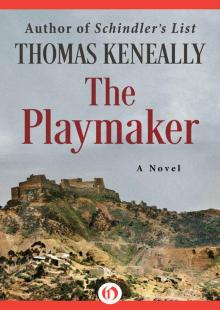 The Playmaker
The Playmaker To Asmara: A Novel of Africa
To Asmara: A Novel of Africa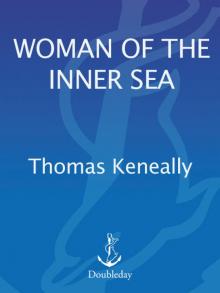 A Woman of the Inner Sea
A Woman of the Inner Sea The Tyrant's Novel
The Tyrant's Novel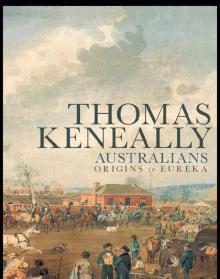 Australians
Australians Schindler's Ark
Schindler's Ark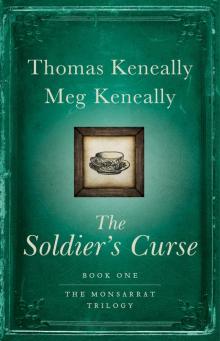 The Soldier's Curse
The Soldier's Curse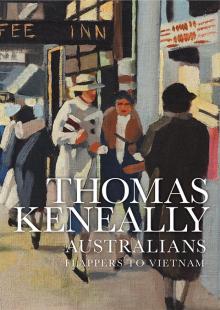 Australians, Volume 3
Australians, Volume 3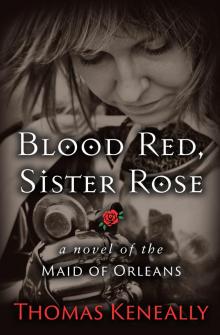 Blood Red, Sister Rose
Blood Red, Sister Rose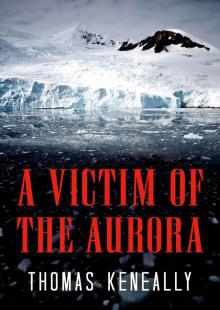 A Victim of the Aurora
A Victim of the Aurora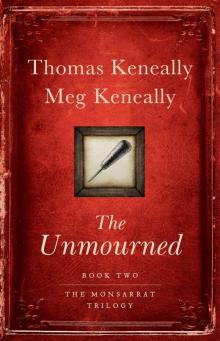 The Unmourned
The Unmourned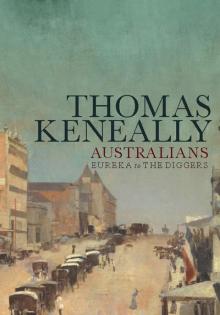 Australians, Volume 2
Australians, Volume 2 To Asmara
To Asmara